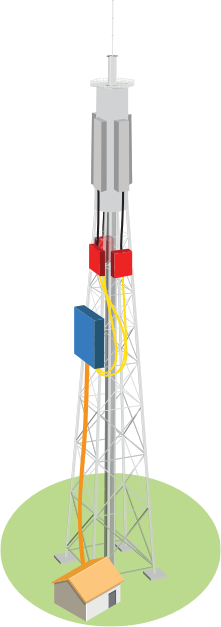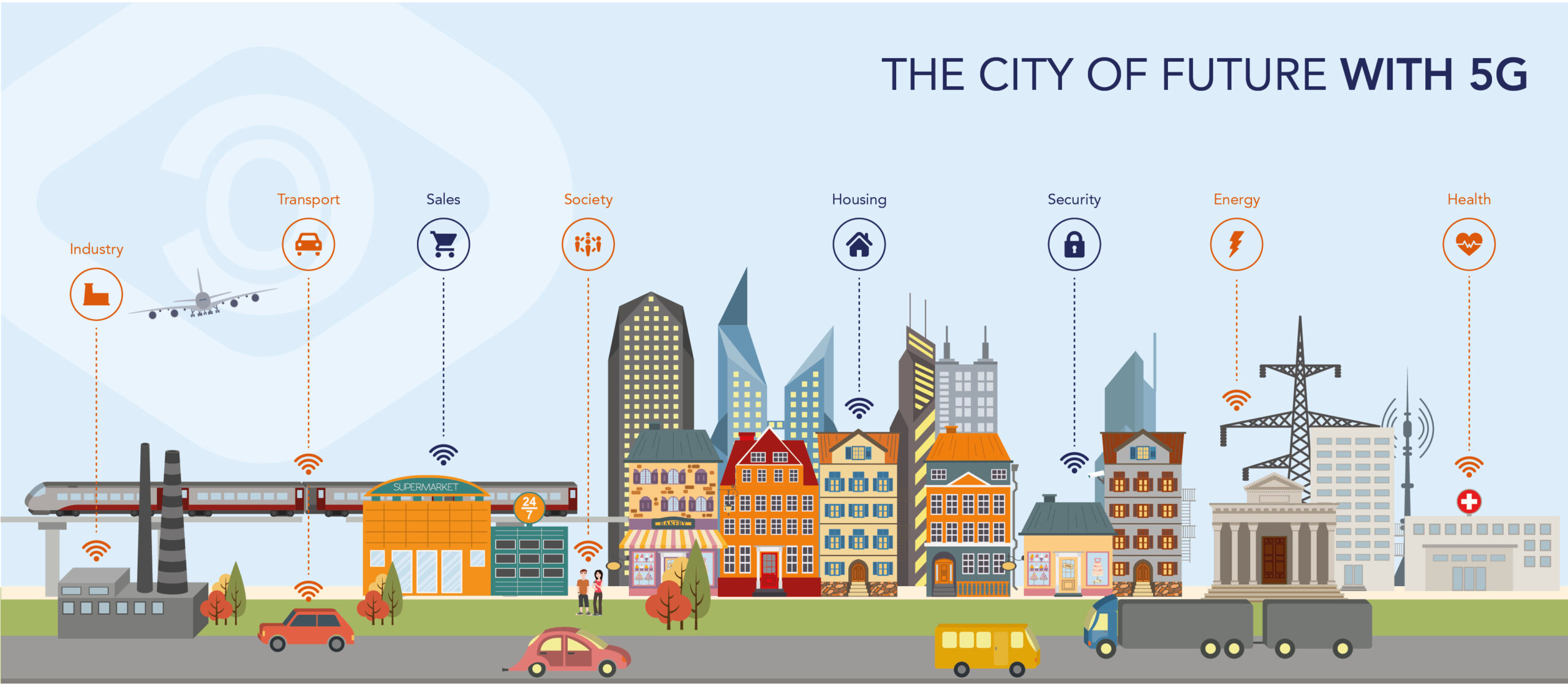
FTTA
With the development of smartphones and their growing bandwidth needs, the deployment of very high-speed mobile networks is a major challenge of the 21st century. In order to provide their clients with sufficient service quality, mobile operators must increase both the density and power of their network through the use of FTTA (Fiber To The Antenna) technologies.
To connect the antenna, the coaxial cables originally used are now replaced by optical fiber solutions, which guarantee higher speed. Through its range of products dedicated to FTTA deployment, FOLAN supports you in the deployment of your radio network.



4g
Principle4G is the fourth generation of mobile technologies and is based on the LTE (Long Term Evolution) standard. Thanks to a new radio interface based on IP technology, it improves data transport and provides very high-speed access up to 150Mbit/s, which is 5 times faster than 3G.
Implemented in 2011, 4G technology is used in more than 100,000 antennas in France, covering more than 90% of the population and 80% of the territory.


Regardless of your radio site architecture, FOLAN supports you with its range of products dedicated to FTTA:




This solution, which is fast and easy to implement, is recommended for sites where the distance between the base station and the antennas is short and the coursing of cables is directly accessible.






This architecture is recommended for outdoor sites for which the base station cannot be installed in the direct vicinity of the antennas.







This solution is recommended for the same sites as indirect architecture, but for which the base station is installed in a protected area.







5g
PrincipleEven as 4G deployment is still under way, the telecom industry is already paving the way for tomorrow’s technologies with 5G. Standards have not yet been defined and several technologies for accessing radio and network architectures are currently under review, but the key issue with 5G resides in manufacturers’ ability to restructure how they think about our networks to adapt to tomorrow’s super-connected world.
Unlike 4G, which involved increasing speeds in relation to previous technologies, 5G is seen as a breakaway generation. The core issue: enabling the cohabitation of multiple applications and pushing the limits of our use.
With the promise of extended coverage, an increase in speeds and optimization of power consumption, 5G technology is aimed at a wide range of sectors in the economic fabric: power, healthcare, media, industry and transport.
While it will provide the energy industry with more efficient and reactive management of its networks, the applications in the healthcare, transport and media sectors will enable improvements that are immediately visible in everyday life. Surgical robots, connected devices, industrial process improvement: each use will require specific features. The challenge for 5G thus resides in its ability to adapt to this diversity of use: there will not be one but several 5G technologies.

coverage
increasing wireless capacity
reliability
latency
data flow (10 to 100 times more than 4G & 4.5G networks)
saving energy
more connected devices per unit area
life if the battery



